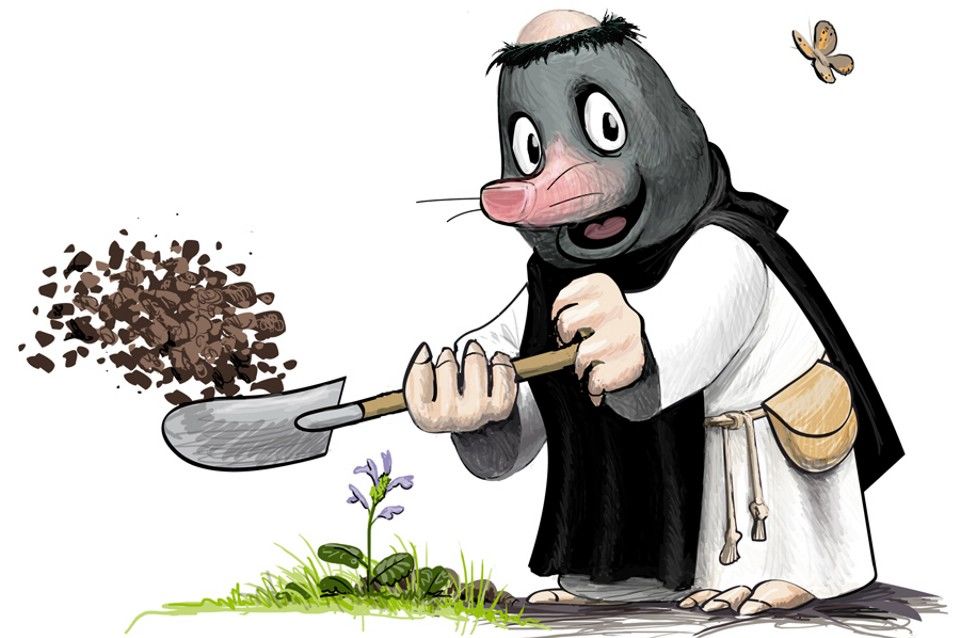KlostERleben
KlostERleben activities


Activities about the abbey’s history
Do you know why the Cistercians were called the White Monks, or what their life was like at the monastery? Look, I’ve got a magnifying glass. Let’s delve into some of the abbey’s secrets. Off we go to the Michaelstein of yore!
Be a monk for a day
Pop on your habit, it’s time to become a monk! Join Brother Grabolin to find out what it’s like living in a monastery and learn more about monks’ everyday lives.
A splash of colour
How can you make ink and dyes out of plants and stone? Find out with us by making them yourself. But what have monks got to do with it? We get to the bottom of that mystery by giving full rein to our artistic flair.
The art of bookmaking
In the Middle Ages, books were not just books: they were elaborately designed works of art. You can bind your own book; all you need is your imagination and a little bit of skill.
Monastic garden activities
Plant juice makes you strong! That was once common knowledge. Fortunately for us, monks recorded and preserved a great deal of wisdom about which plants are valuable for cooking and healing. Various medicinal and otherwise useful plants grow in our gardens, just like in days of yore. Every year, long-forgotten varieties of herbs, vegetables, cereals and fruit flourish there. Find out interesting plant facts on a sometimes spicy, sometimes flowery, usually edible exploration of your five senses – one that is easy to reproduce at home.
Nature explorers’ abbey hunt
Rack your brains and follow the clues through the abbey, fields and woods – a team tour featuring both nature and culture. Look forward to discovering new facts, putting your heads together and learning some rib-tickling new riddles.
Bitter, sweet and mellow
Follow your nose and explore the monastic gardens with your eyes wide open, collecting ingredients to make your own fragrant or tasty gifts: lavender bags, petal soap bars, herbal salt, rose sugar, tea or smoothies. Truly organic: healthy and a treat for the senses!
Music activities
In the past, monks once sang here; today, you can hear all kinds of musical instruments at the abbey. Let me show you my living room, there’s lots to discover! I can’t wait to find things out with you.
Solving the secret of music
On your explorations of the music exhibition you will encounter a time machine, multimedia exhibits and experiments. You will not just see and hear musical instruments, but even try out some of them. Michel the cat really looks forward to meeting visitors of any age – and especially you!
Wood sounders and guiros – a musical mystery
With rainmakers, thunder tubes and many other Orff instruments, you can mimic various sounds of nature and everyday noises. These can be put together to create little compositions on all sorts of themes, which you can perform to get everyone guessing.
Everything has its use
Stop! Don’t throw that away! Basic materials such as nutshells, cardboard tubes, bottle caps, pipes and much more can be turned into great musical instruments. You, too, will be doing all kinds of woodwork, armed with a hammer, saw and drill. The result of our construction work together will be a little musical gem that you can play both at the abbey and when you get home.
DrumCircle
One circle, plenty of drums. A rhythm you just can’t resist joining in, whether you can play or not!
Guided tours
Standard tours lasting approx. 90 minutes can be booked in advance including the museum with the cloisters, the monastic gardens and the music exhibition “KlangZeitRaum” – Solving the Secret of Music. These are designed for groups of up to 30 people. Larger groups are divided up and can take a tour at the same time, on request.
Special tours are recommended for any visitors who are interested in a specific topic, are elderly or have difficulty walking. These individual tours of specific areas take roughly 1 hour and do not involve a great deal of stair-climbing. Visitors are then free to view the remaining areas of the museum if so desired.
A special tour is available on Salomon de Caus’s music machine, with a live demonstration of how water sets a sculpture in motion and plays a water organ with a pinned barrel. This tour is offered to groups of up to 60 people and takes roughly 45 minutes. Visitors are then free to view the remaining areas of the museum if so desired.
Special children’s tours have been designed for young visitors of different ages and levels of education. The group (of up to 25 children) can, of course, select certain areas they wish to visit.
When the nights draw in, evening tours by candlelight bring out the dignified beauty of the cloisters particularly starkly. These tours introduce visitors to the places where the monks once lived and worked, and take roughly 1 hour.
